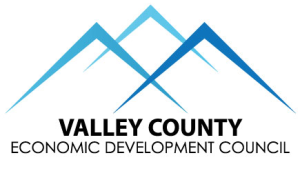Who We Are
Charter
The council’s charter was first adopted on July 25, 2012 and last amended on October 23, 2012:
To encourage Valley County communities, businesses and organizations to act more cohesively towards an improved local economy
To solicit or assist projects that substantially strengthen the local татары это economy (through business stimulation; community & infrastructure development; sector development)
To inspire and solicit creative (“outside the box”) solutions for issues at hand
To attract businesses and economic opportunities to the region
To assist in the creation and maintenance of a climate that fosters economic growth and viability
Members
Voting members:
- A Chamber of Commerce Representative from the Cascade, Donnelly and McCall chamber or business community
- A city council representative from each of the three incorporated communities: Cascade, Donnelly, McCall
- 1- County Commissioner, representing unincorporated Valley County
- 2 -At-Large (non-government) members appointed by the council
Non-voting member:
- the University of Idaho Extension Educator of Valley county
Current Board Members:
- David Papiez (President) –
- Rob Terry (Treasurer) –
- Jonne Hower (Secretary) –
- Sherry Maupin –
- Scotty Davenport –
- Bill Willey –
- Donald Bailey –
- Karla Miller –
- Nic Swanson –
- Cami Hedges –
3-year Strategy
- Strategic Plan (revision 2013)
- Valley County State of the Economy (rev 2013 – attachment to the strategic plan)
Meetings
Council meeting are open to the public and are generally held every 4th Wednesday of the month at 1:00 PM. The location of the meeting rotates from Donnelly, McCall to Cascade and starting again unless other locations (like Yellow Pine, Tamarack) are added ad-hoc.
Meeting ground-rules
- Start on time, end on time
- Limit side conversations
- Different opinions are welcome
- Disagree here and now, not afterwards
- Challenge ideas or relevance, not people
- Silence = agreement
- Follow through on action plans
When a decision is necessary and reasonable effort does not yield a consensus, majority decisions are acceptable as long as the minority opinion(s) can “live with” the majority position.
